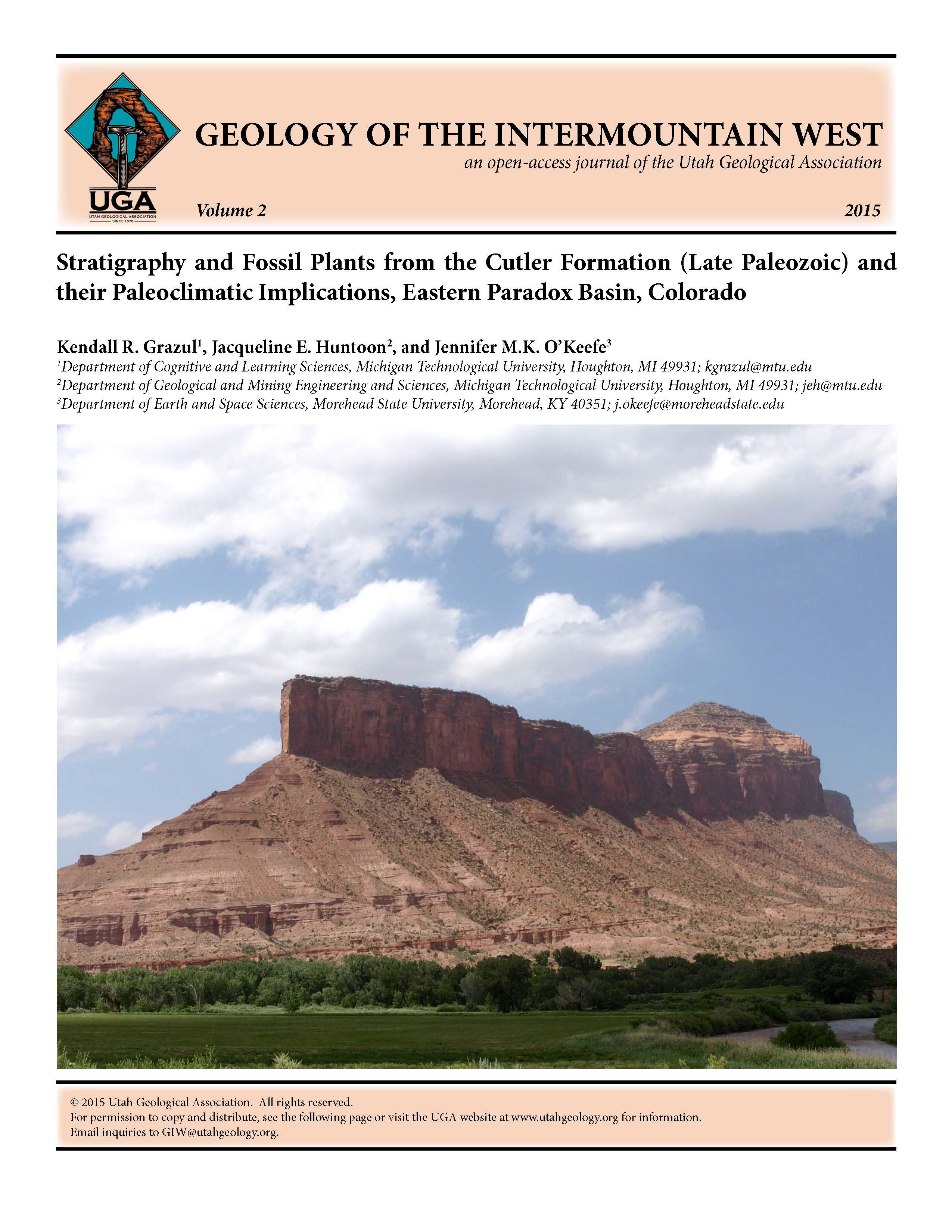Stratigraphy and fossil plants from the Cutler Formation (Late Paleozoic) and their paleoclimatic implications, eastern Paradox Basin, Colorado
Abstract
Exposures of the late Paleozoic Cutler Formation, near the town of Gateway, Colorado, have traditionally been interpreted as the product of alluvial-fan deposition along the western flank of the Uncompahgre uplift and within the easternmost portion of the Paradox Basin. The Paradox Basin formed between the western margin of the Uncompahgre uplift, a segment of the Ancestral Rocky Mountains, and the western paleoshoreline of the North American portion of Pangea. This part of Pangea is commonly thought to have experienced semi-arid to arid conditions and warm temperatures during the Pennsylvanian and Permian. We present stratigraphic and fossil plant evidence in this paper to support prior interpretations that the Cutler near Gateway, Colorado, was deposited by alluvial fans that hosted localized wetland areas. Our findings are consistent with the results of prior studies that have suggested the climate in the area was warm, semi-arid, and ice-free at the time the plants described in this paper were living. Plant fossils collected from the Cutler Formation came from two sites in The Palisade Wilderness Study Area (managed by the U.S. Department of the Interior, Bureau of Land Management) of western Colorado. The stratigraphic sections at the sites were composed mostly of pebble to cobble conglomerate and sandstone, but the fossil plants were mainly preserved in fine-grained intervals (fine-grained sandstone to siltstone). The preservation of plant fossils in the proximal Cutler Formation is remarkable because the surrounding sections consist mostly of conglomerate and sandstone interpreted as fluvial and debris-flow deposits. The fine-grained strata containing the plant horizons must have been deposited in a wet and protected setting, possibly a spring-fed abandoned channel on the alluvial fan. The plants and their surrounding sediment must have been rapidly buried in order to allow for long-term preservation of the fossils. It seems likely that vegetation was abundant in and adjacent to low-lying wet areas on the fan’s surface, based on the abundance of plant fossils found at the two sites. The fossil plant assemblage includes Calamites, Walchia, and Pecopteris. The flora are interpreted to have lived near the apex of the alluvial-fan system. These fossils suggest that warm and at least seasonally and locally wet conditions existed in the area during the time that the plants were growing. More arid conditions during the late Paleozoic are suggested by the characteristics of some of the time-equivalent and near time-equivalent rocks exposed to the west of the study area in the central Paradox Basin.

Copyright (c) 2015 Geology of the Intermountain West

This work is licensed under a Creative Commons Attribution 4.0 International License.




